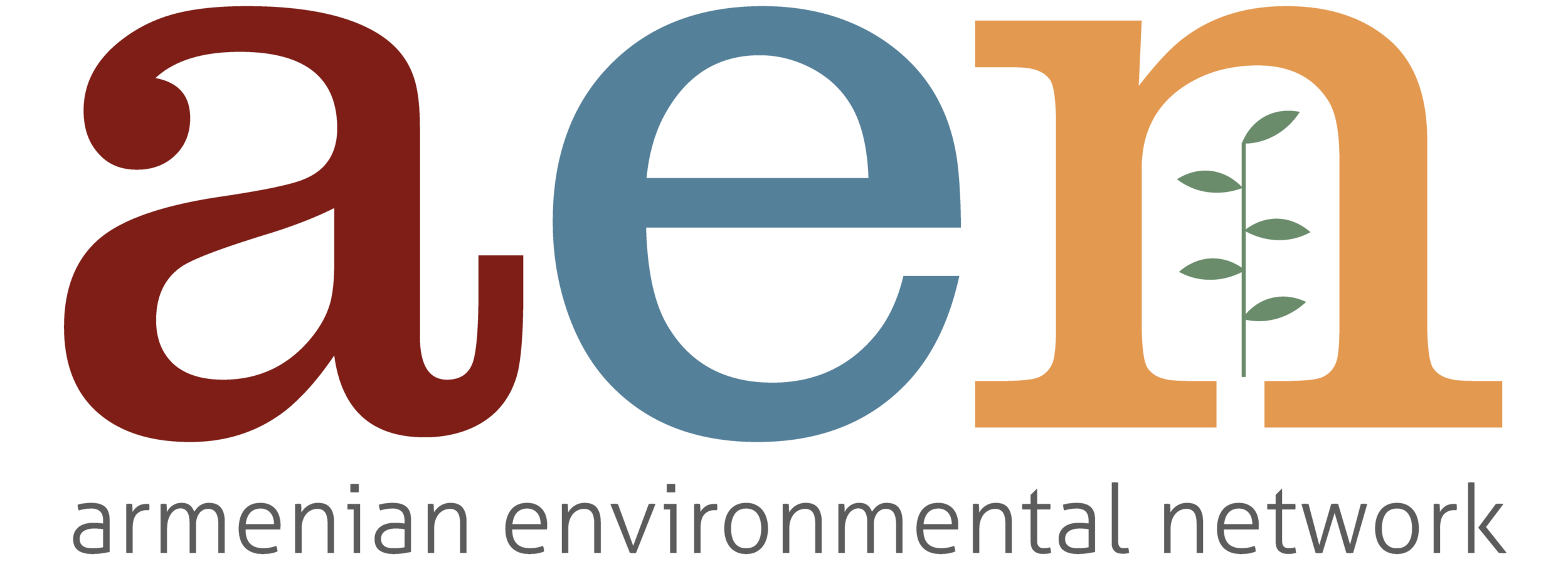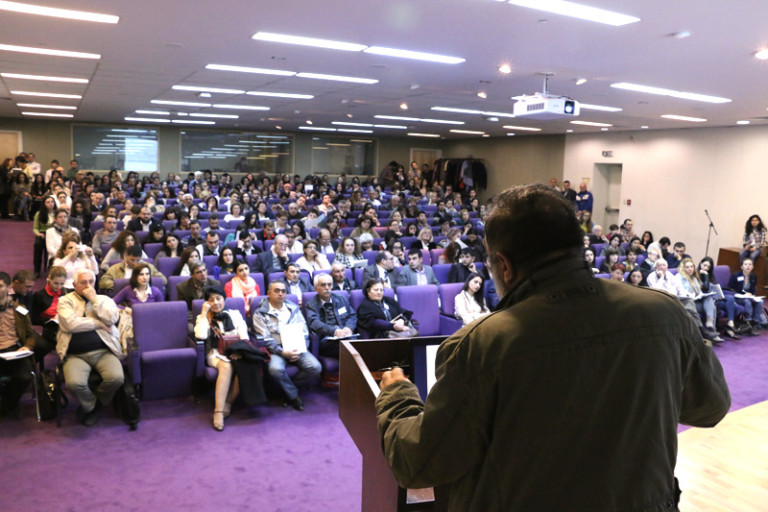Paving the Way for Responsible Ecotourism in Armenia
By Armine Sargsyan, Armenia Office Director
AEN and the American University of Armenia’s Acopian Center for the Environment (AUA Acopian Center) have collaborated on various different projects over the years and in the fall of 2015, we began to develop “The Thousand Leaf Project”, a citizen science website housing a database of edible wild plants and mushrooms in Armenia and recipes that Armenians have used throughout history (stay tuned for more updates about this project). The project has multiple aims, one being to encourage ecotourism in Armenia, hence we made it our goal to get the website up and running in order to launch it at the Ecotourism Conference which took place at AUA on April 2nd.
Since I have a degree in visual arts, my role in The Thousand Leaf Project quickly developed to be the designer and AUA Acopian Center also asked me to do the graphic design for the Ecotourism Conference. Being part of the team that helped put the conference together, I felt a sense of pride in what was accomplished on that day.
Ever since I moved to Armenia in 2013, I have witnessed diverse efforts to promote ecotourism by various local organizations. The goals being to promote a new source of revenue for the villagers, to discourage depopulation of rural regions, to encourage environmental protection, and to discourage the expansion of irresponsible mines and other environmentally harmful developments. Slowly, villagers have been catching on to the trend, and have been producing organic products and opening B&B’s to meet the demands of the new and exciting market. Through the years there has also been development of themed festivals in different regions, such as the Lavash Festival, Wine Festival and even Sheep Shearing Festival. Only recently have there been efforts to unite these forces in order to promote exchange of information and best practices, as well as promote possible collaboration. That is why the AUA Acopian Center sought this opportunity to organize a conference on ecotourism, bringing together all stakeholders: from villagers to organizers and from tour guides to honey producers.
Manoogian Hall, filled to capacity (photo by AUA Acopian Center)
When I first walked into the main conference room, I was overwhelmed by the amount of people present. It was the first time I had seen Manoogian Hall meet its full capacity. Since the seats were filled, people were leaning against the walls and sitting on the floor. Alen Amirkhanian, the Director of the AUA Acopian Center, in his opening remarks asked who in the audience was present from rural regions. What seemed like half of the people in the room raised their hands around me. Witnessing this was extraordinary and inspirational as people from the regions are the heart of what drives ecotourism and it’s not often that you see such inclusion of people from all over Armenia at an event in Yerevan.
Since there was so much to discuss and so many sub-topics in ecotourism, it would have been difficult to do it all at once. Therefore, concurrent sessions were held on: Food and Agro Tourism, Wildlife-based Tourism, Adventure Tourism, and Paleo/Cultural Tourism. We were brought together again, for a general session with speakers from WWF, to the World Bank, to the very memorable Varazdat Karapetyan from the Regional Development Foundation who spoke from his heart about the importance of Armenians exploring the countrysides and meeting the amazing people inhabiting these places. He emphasized that that is where the richness lies, in these people. We were then divided again into four groups to choose from the following concurrent sessions: Hiking Trails, Maps and Guidebooks, Tourist Expectations, Setting up an Ecotourism Business, and Collaboration.
Time was allotted for audience members to ask questions after the speakers delivered their speeches. Lively discussions took place during this time between audience members and speakers about best practices, ranging from sustainable harvesting of wild edibles, to posting trail signs. Outside the conference room, tables were set up, where various local organizations presented themselves and their efforts. I found myself witnessing meaningful exchanges beginning to take place. I was witnessing the unification of people who are the caretakers of the environment in Armenia. People who are willing to face the odds against them, such as developments of destructive industrial projects, deforestation, and littering. Yet these are the people who hold the key, who are pursuing alternative practices that can preserve the environment and combat the odds, and through collaboration, have a better chance of paving a more sustainable path.
There was never a dull moment in the entire 7-hour conference, everyone who was there was passionate about ecotourism and the positive impacts it can have on Armenia. Unanimously the audience demanded that this same conference be organized annually and in return Alen Amirkhanian made the promise that it will be so. I myself left feeling proud and was filled with hope for all the possibilities of tomorrow. As I am now moving on to the next chapter in my life, and moving back to USA, I hope that upon my next trip back I will find a cleaner Armenia, hike the Transarmenian Trail and meet villagers that are self-sustaining through eco-practices.
For more information about the conference visit – https://ace.aua.am/ecotourism/


